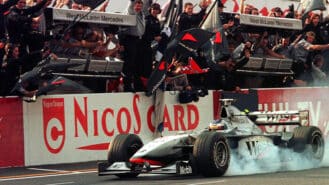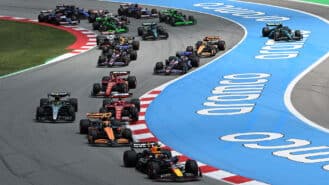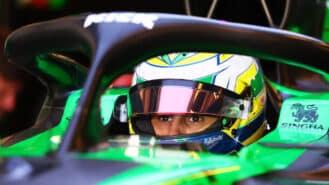My Hungarian journalistic colleague Károly Méhes was pulled into a love of F1 almost single-handedly by one driver: Gilles Villeneuve. He was a devastated teenager when Zolder 1982 played out with the catastrophic loss of a performer quite unique in the sport’s history; one micro-decision from an angry mind – which even in less stressed circumstances probably didn’t have enough fear – was all it took to lock fate in place.

Fuelled by obsession, Mehés has kept his teenage fan love of Villeneuve’s often-astonishing feats intact even as he adopted the necessarily more hard-headed approach to the sport as his journalistic career progressed. But in his new book Gilles Villeneuve: His untold life from Berthierville to Zolder he has combined the passion of his fan years with a journalistically forensic look at his hero.

Having been the subject of books by several fine authors over the years, you might assume everything to be known about Villeneuve had already been written. Well, maybe it has now, for Méhes has interviewed 44 of those closely associated with him – family, fellow drivers, mechanics, engineers, friends, journalists, photographers – and given each of them their own short chapter.
There is one glaring omission – our own Nigel Roebuck, a close friend and confidante – but that aside, those interviews combine to paint a multi-faceted picture of the man and the driver. The views are often contradictory for much as Villeneuve was worshipped by fans, there was a contingent among his fellow drivers who considered his style of racing irresponsible. That view is represented here, as well as the awe-inspired appreciation, by others of his peers, of a stone cold driving genius.
From the archive: our own Villeneuve retrospective (2012)

There are different interpretations too about exactly what unfolded at Imola and Zolder ’82, the ill-tempered and ultimately fatal sequence of events and what lay behind them. Villeneuve’s side of the story was extensively told almost as it happened, righteous fury at betrayal straight from the horse’s mouth. But Pironi’s, as the bad guy, was accorded only a tiny fraction of that coverage.
Unfortunately Marco Piccinini – the Ferrari sporting director at the time and a man very much in Pironi’s corner – only hints at what lay behind the unfortunate internal dynamics between all the parties. It’s left to photographer Allan de la Plante and journalist Peter Windsor between them to articulate what those were on-track and behind the scenes respectively. There’s ambiguity in both – and this book fleshes some of that out. It adds an extra dimension to the background, bringing to life the turbulence in Villeneuve’s mind as he was suddenly forced in his final days to re-assess his whole relationship with Ferrari.

The Piccinini-Pironi dynamic, two smart political operators suddenly in the perfect positions to help each other achieve their lofty ambitions, was what took the whole Imola controversy from a piece of on-track niggle between competitive team-mates to something much more poisonous and combustible. Although the reader can build that picture from the relevant interviews in Méhes’ book, Piccinini’s reticence on this occasion is disappointing. Talking with him a few years ago, he was more illuminating, saying: “Although Mr Ferrari loved Gilles, in many ways Didier actually had a better communication with the Old Man.”

While Villeneuve post-Imola saw Pironi’s actions behind the scenes as devious, they might also be interpreted as just the logical application of a professional, that his efforts at getting better lines of communications, etc. were just his normal way of trying to improve his own performance and that of the team, rather than attempts at side-lining Villeneuve. Maybe in time Gilles might have come to see it that way too. But maybe not.
This is an unusual book in not maintaining a narrative or even a strong editorial voice, instead simply presenting the interviews as question/answer transcriptions. But it’s been done in such a way that brings further perspective to the luminous shooting star that was Gilles Villeneuve.
Unfortunately Gilles Villeneuve: His untold life is currently out of print, but can be found online









